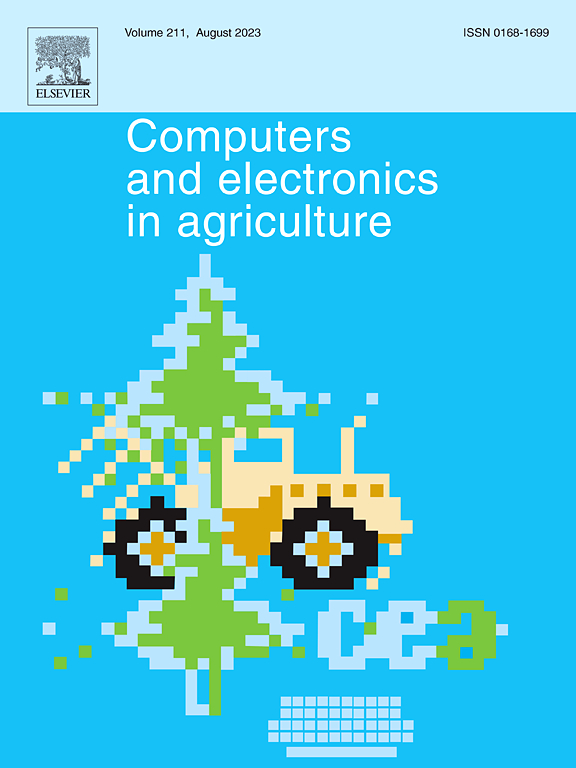KDI-Transformer: A method for identifying kiwifruit leaf disease severity in complex environments
IF 8.9
1区 农林科学
Q1 AGRICULTURE, MULTIDISCIPLINARY
引用次数: 0
Abstract
The accurate identification of the severity of kiwifruit leaf diseases faces significant challenges due to the high morphological similarity between different disease states and interference from complex environmental factors. To address this issue, we propose a Vision Transformer-based severity grading model for kiwifruit leaf diseases, called KDI-Transformer. This model deeply integrates the global modeling capability of Transformer with the local feature extraction advantages of Convolutional Neural Networks (CNNs). It incorporates three innovative modules: the Multi-Scale Perception Module (MSP), which extracts multi-granularity lesion features using parallel multi-scale convolutional kernels and integrates contextual information at different scales; the Adaptive Feature Transmission Module (AFT), which uses dynamic gating weights to adaptively adjust the inter-layer feature transmission ratio, effectively alleviating the feature attenuation problem in deep networks; and the Local-Global Interaction Module (LGI), which employs an attention mechanism for dynamic calibration of local features under global semantic guidance, significantly enhancing the model’s sensitivity to subtle disease differences. Experimental results demonstrate that KDI-Transformer achieves an accuracy of 89.57 %, significantly outperforming various baseline models, and provides a new solution for precise crop management in smart agriculture.
KDI-Transformer:一种在复杂环境下识别猕猴桃叶片病害严重程度的方法
由于猕猴桃不同病种形态的高度相似性和复杂环境因素的干扰,猕猴桃叶片病害严重程度的准确鉴定面临重大挑战。为了解决这个问题,我们提出了一个基于Vision transformer的猕猴桃叶片病害严重程度分级模型,称为KDI-Transformer。该模型将Transformer的全局建模能力与卷积神经网络(Convolutional Neural Networks, cnn)的局部特征提取优势深度融合。它包含三个创新模块:多尺度感知模块(MSP),该模块使用并行多尺度卷积核提取多粒度病变特征,并整合不同尺度的上下文信息;自适应特征传输模块(AFT),利用动态门控权自适应调整层间特征传输比,有效缓解深度网络中的特征衰减问题;局部-全局交互模块(local - global Interaction Module, LGI)采用全局语义引导下的关注机制对局部特征进行动态校准,显著提高了模型对细微疾病差异的敏感性。实验结果表明,KDI-Transformer的准确率达到89.57%,显著优于各种基线模型,为智能农业作物精准管理提供了一种新的解决方案。
本文章由计算机程序翻译,如有差异,请以英文原文为准。
求助全文
约1分钟内获得全文
求助全文
来源期刊

Computers and Electronics in Agriculture
工程技术-计算机:跨学科应用
CiteScore
15.30
自引率
14.50%
发文量
800
审稿时长
62 days
期刊介绍:
Computers and Electronics in Agriculture provides international coverage of advancements in computer hardware, software, electronic instrumentation, and control systems applied to agricultural challenges. Encompassing agronomy, horticulture, forestry, aquaculture, and animal farming, the journal publishes original papers, reviews, and applications notes. It explores the use of computers and electronics in plant or animal agricultural production, covering topics like agricultural soils, water, pests, controlled environments, and waste. The scope extends to on-farm post-harvest operations and relevant technologies, including artificial intelligence, sensors, machine vision, robotics, networking, and simulation modeling. Its companion journal, Smart Agricultural Technology, continues the focus on smart applications in production agriculture.
 求助内容:
求助内容: 应助结果提醒方式:
应助结果提醒方式:


